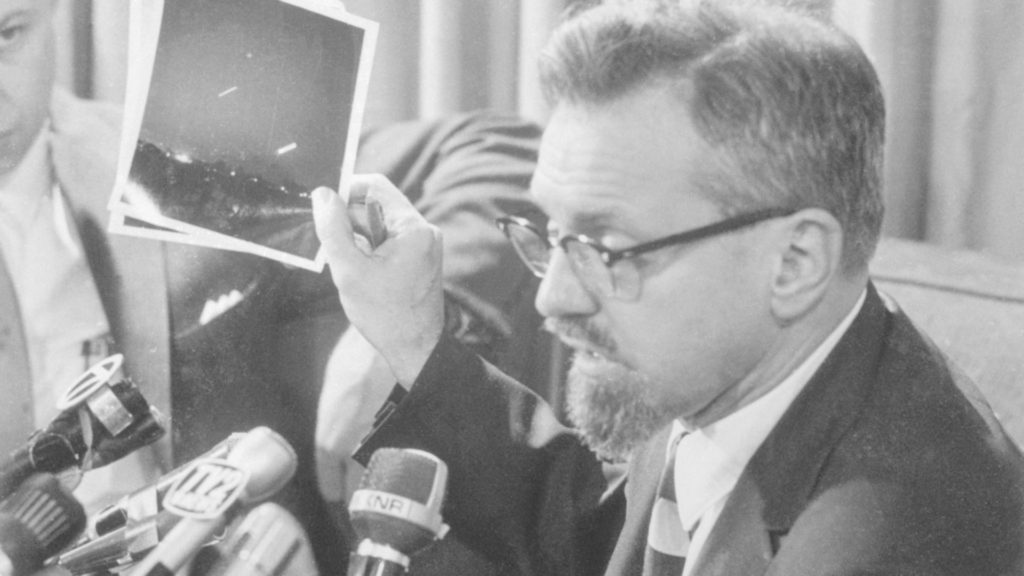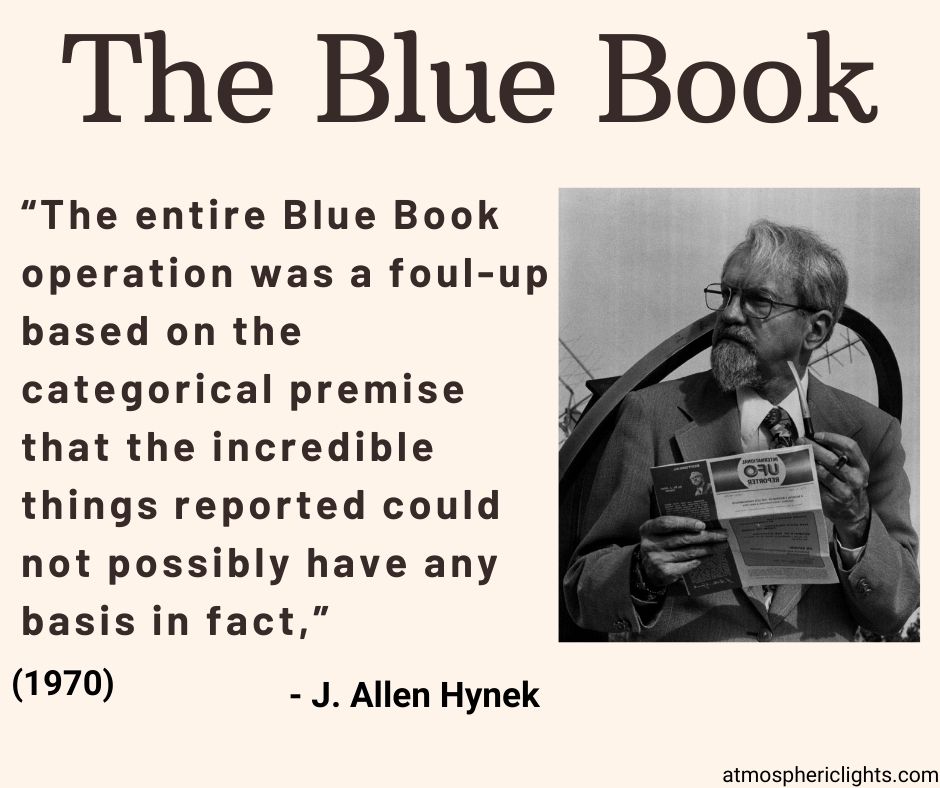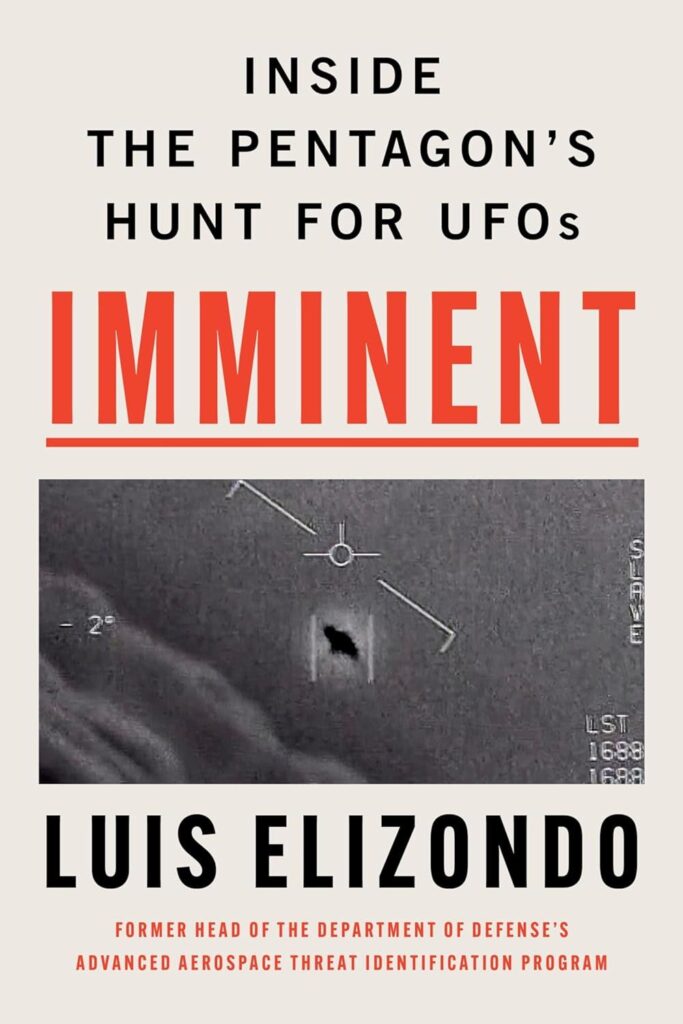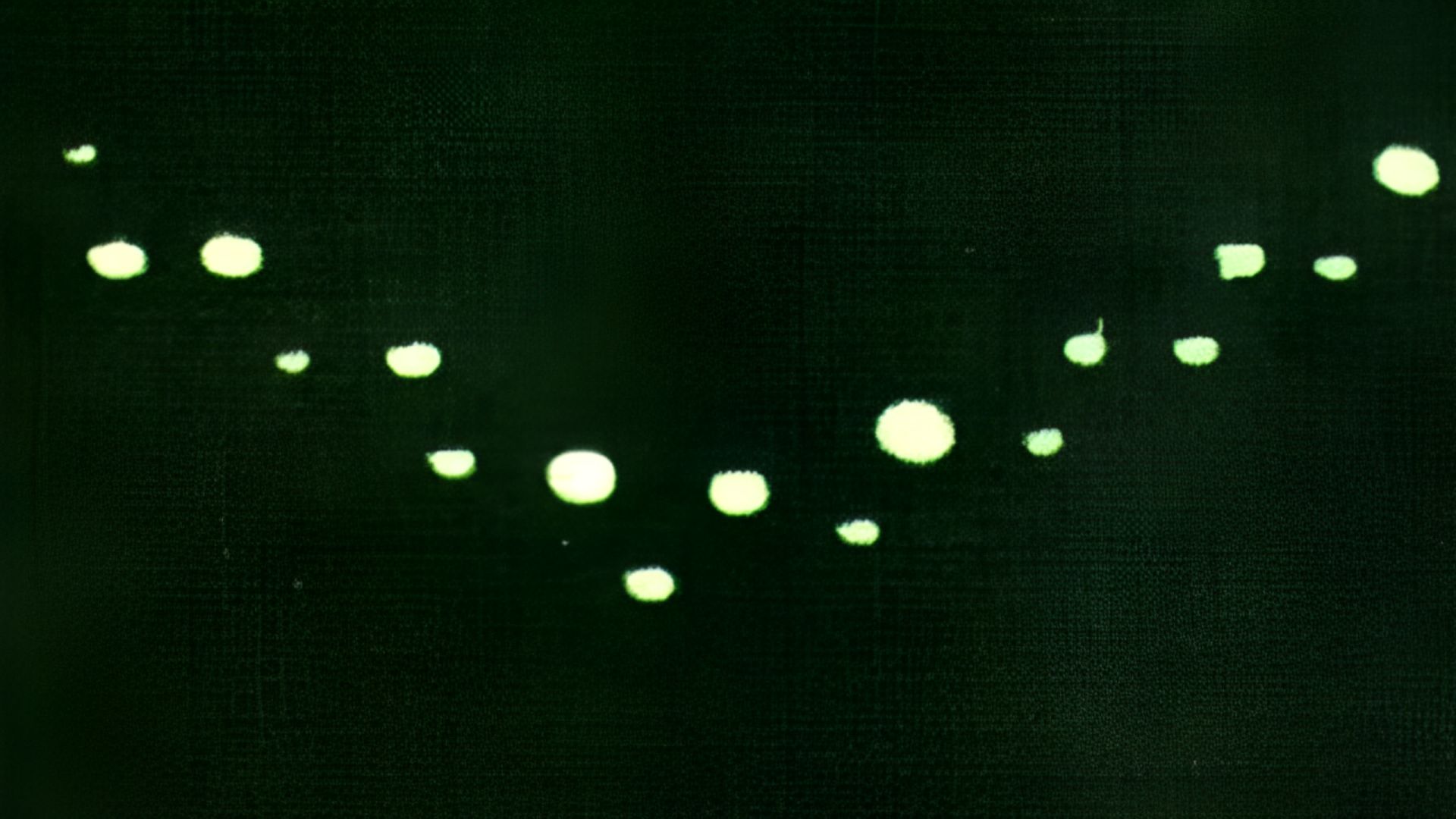In the late summer of 1951, the city of Lubbock, Texas, became the epicenter of one of the most intriguing and well-documented UFO sightings in American history. The Lubbock Lights, as they came to be known, captivated the nation and left both witnesses and investigators puzzled for decades to come.
The Night That Changed Lubbock: August 25, 1951
On August 25, 1951, at approximately 9:10 PM, three Texas Tech University professors were enjoying a relaxing evening in the backyard of one of their homes. Dr. W.I. Robinson (geology), Dr. A.G. Oberg (chemical engineering), and Dr. W.L. Ducker (petroleum engineering) were discussing micrometeorites when their conversation was abruptly interrupted by an astonishing sight.
The professors observed a formation of 20 to 30 lights, resembling pale blue-green dots, streaking across the night sky at high speed. The lights were arranged in a semicircular pattern and passed over the men from north to south in a matter of seconds. Stunned by what they had witnessed, the professors attempted to rationalize the sighting. However, their scientific backgrounds left them unable to explain the phenomenon through conventional means.
Approximately an hour later, the group observed another formation of lights, this time traveling from east to west. The professors, now thoroughly intrigued, decided to alert the local newspaper, the Lubbock Avalanche-Journal, about their experience.
As news of the sighting spread, more reports began to pour in from across Lubbock and the surrounding areas. Over the next few weeks, hundreds of people claimed to have witnessed similar light formations in the night sky. The sightings weren’t limited to a single demographic; witnesses included police officers, businessmen, and even a Texas Tech football coach.
One of the most significant developments in the Lubbock Lights case occurred on August 30, 1951. Carl Hart Jr., a 19-year-old student at Texas Tech, managed to capture photographic evidence of the phenomenon. Using a Kodak 35-millimeter camera, Hart took five photos of the lights as they passed over his parents’ home in Lubbock.
Hart’s photographs, which showed a V-shaped formation of bright lights against a dark sky, quickly became the talk of the town. The images were published in newspapers across the country and even appeared in LIFE magazine, bringing national attention to the Lubbock Lights incident.
Project Blue Book: The Air Force Investigation

The United States Air Force, which had been investigating UFO reports through Project Blue Book since 1947, took notice of the Lubbock sightings. Captain Edward J. Ruppelt, who would later become the head of Project Blue Book, was sent to Lubbock to investigate the incident.
Ruppelt interviewed numerous witnesses, including the three professors and Carl Hart Jr. He also examined Hart’s photographs, which he found to be genuine and unaltered. Despite his thorough investigation, Ruppelt was unable to provide a definitive explanation for the lights.
Theories and Explanations: Birds, Aircraft, or Something Else?

The Air Force considered several potential explanations for the Lubbock Lights:
1. Birds reflecting city lights: Some suggested that the lights could have been caused by plovers, a type of bird known to fly in V-shaped formations, reflecting light from the newly installed vapor street lamps in Lubbock.
2. Aircraft: The possibility of a secret military aircraft was considered, but no evidence was found to support this theory.
3. Meteors: While some witnesses described the lights as resembling meteors, the repeated sightings and formation patterns made this explanation unlikely.
4. Weather phenomena: Unusual atmospheric conditions were proposed as a possible cause, but no specific weather event could account for the sightings.
5. Hoax: The credibility of the witnesses, particularly the three professors, made a large-scale hoax improbable.
Despite these attempts at explanation, none of the proposed theories fully accounted for all aspects of the sightings. The Air Force officially classified the Lubbock Lights as “Unidentified” in Project Blue Book.
The Impact on UFO Research and Public Perception

The impact of the Lubbock Lights extended far beyond the initial sightings. The incident sparked a wave of UFO interest across the United States and contributed to the growing public fascination with the possibility of extraterrestrial visitations. The case remains one of the most well-documented and puzzling UFO incidents in American history.
Dr. J. Allen Hynek, an astronomer who served as a scientific consultant to Project Blue Book, later revisited the Lubbock Lights case. In his 1972 book “The UFO Experience: A Scientific Inquiry,” Hynek expressed his continued bewilderment at the incident. He noted that the credibility of the witnesses, particularly the three professors, made the case particularly compelling.
One aspect of the Lubbock Lights that continues to intrigue researchers is the consistency of the witness reports. Despite the large number of sightings over several weeks, the descriptions of the lights remained remarkably similar. Witnesses consistently reported seeing formations of 15 to 30 lights, often arranged in a V or U shape, moving at high speeds across the sky.
The lights were typically described as being bluish-green or white in color, and many witnesses reported that they appeared to be silent. This consistency in reporting, coupled with the multiple sightings by credible observers, has made the Lubbock Lights a cornerstone case in UFO research.
Scientific Analysis: Then and Now
In the years following the initial sightings, various theories have been proposed to explain the Lubbock Lights. Some researchers have suggested that the lights could have been caused by a natural phenomenon known as “earthquake lights.” These are luminous aerial phenomena that have been reported to occur before, during, or after seismic activity. However, there is no record of significant seismic activity in the Lubbock area during the time of the sightings.
Another theory proposed by some UFO researchers is that the Lubbock Lights were actually a form of plasma phenomenon, possibly related to electromagnetic disturbances in the atmosphere. This theory attempts to explain the lights’ appearance and behavior, as well as their apparent ability to move in formation at high speeds.
The possibility of advanced technology, either terrestrial or extraterrestrial in origin, has also been considered. Some have speculated that the lights could have been a secret military project, possibly involving experimental aircraft or propulsion systems. However, no concrete evidence has ever been found to support this theory.
One of the most intriguing aspects of the Lubbock Lights case is the photographic evidence provided by Carl Hart Jr. The five photographs taken by Hart remain some of the clearest and most compelling images of a UFO phenomenon from that era. Despite numerous attempts to debunk or explain away the photos, they have withstood scrutiny over the decades.
In 1994, researchers using computer enhancement techniques examined Hart’s photographs. The analysis revealed that the lights in the images appeared to be self-luminous rather than reflections of external light sources. This finding further complicated attempts to explain the lights as reflections from birds or other mundane objects.
The Lubbock Lights incident also had a significant impact on the local community. In the weeks and months following the sightings, Lubbock experienced a surge in tourism, with curious visitors hoping to catch a glimpse of the mysterious lights. Local businesses capitalized on the phenomenon, selling souvenirs and offering “UFO tours” of the area.
The incident also inspired a number of artistic and cultural responses. In 1956, country music singer Slim Willet released a song titled “Flying Saucer Mama,” which referenced the Lubbock Lights. The incident has also been featured in numerous books, documentaries, and television shows about UFO phenomena.
In 2001, on the 50th anniversary of the Lubbock Lights, the city held a commemorative event that included panel discussions, lectures, and a screening of a documentary about the incident. The event attracted UFO enthusiasts, researchers, and curious members of the public from across the country, demonstrating the enduring fascination with the case.
The scientific community’s response to the Lubbock Lights has been mixed over the years. While some scientists have dismissed the incident as a misidentification of natural phenomena, others have acknowledged the case as one of the most puzzling and well-documented UFO incidents on record.
Dr. Bruce Maccabee, an optical physicist who has extensively studied UFO cases, has stated that the Lubbock Lights remain one of the most significant UFO incidents of the 20th century. He points to the credibility of the witnesses, the photographic evidence, and the inability of conventional explanations to fully account for the phenomenon as reasons for the case’s continued importance.
The Lubbock Lights incident also played a role in shaping early UFO research methodologies. The thorough investigation conducted by the Air Force, which included interviews with multiple witnesses and analysis of physical evidence, set a standard for future UFO investigations. The case demonstrated the importance of rapid response to sightings, meticulous documentation, and the value of corroborating evidence from multiple sources.

One of the most significant aspects of the Lubbock Lights case is its timing. The incident occurred during a period of heightened public interest in UFO phenomena, following the famous Roswell incident of 1947 and the Washington, D.C. UFO sightings of 1952. This context contributed to the widespread media coverage and public fascination with the Lubbock sightings.
The Lubbock Lights also had a lasting impact on the witnesses themselves. The three professors who first observed the lights – Robinson, Oberg, and Ducker – found their lives and careers significantly affected by their experience. Initially reluctant to discuss the sightings publicly due to concerns about professional ridicule, they eventually became more open about their experience as public interest in the case grew.
Dr. Robinson, in particular, became an advocate for serious scientific study of UFO phenomena. In a 1967 interview, he stated, “I am convinced that we saw something that night that was controlled, was not conventional aircraft, and was not a natural phenomenon.” This statement from a respected academic lent credibility to the UFO research field and encouraged other scientists to consider the phenomenon worthy of study.
The Lubbock Lights case also highlighted the limitations of Project Blue Book and the U.S. Air Force’s approach to UFO investigations. Despite the thorough initial investigation by Captain Ruppelt, many UFO researchers felt that the Air Force’s final “Unidentified” classification was inadequate. This dissatisfaction contributed to growing public skepticism about the government’s handling of UFO reports and fueled conspiracy theories about official cover-ups.

As an Amazon Associate, I earn from qualifying purchases that help keep this content free.
In the decades since the Lubbock Lights, the incident has continued to be a subject of debate and research among UFO enthusiasts and skeptics alike. The case has been featured in numerous books and documentaries about UFO phenomena, including:
1. “The Report on Unidentified Flying Objects” by Edward J. Ruppelt (1956)
2. “The Hynek UFO Report” by J. Allen Hynek (1977)
3. “UFOs: Generals, Pilots, and Government Officials Go on the Record” by Leslie Kean (2010)
These works have helped to keep the Lubbock Lights case in the public consciousness and have introduced new generations to this intriguing incident.
The Lubbock Lights case has also inspired further research into similar phenomena. For example, the 1997 “Phoenix Lights” incident in Arizona, which involved multiple witnesses observing formations of lights in the night sky, drew comparisons to the Lubbock case. Researchers have noted similarities in witness descriptions and the formation patterns of the lights, suggesting possible connections between these events separated by decades and hundreds of miles.
In recent years, advances in technology have allowed for new analyses of the Lubbock Lights case. Digital enhancement of Carl Hart Jr.’s photographs has revealed previously unnoticed details, while computer simulations have been used to model the lights’ behavior based on witness accounts. These new approaches have provided fresh insights into the case but have yet to definitively solve the mystery.
The enduring legacy of the Lubbock Lights extends beyond UFO research. The incident has become a part of local folklore in Lubbock, Texas, and has been incorporated into the city’s cultural identity. Local artists have created works inspired by the lights, and the incident is often mentioned in discussions of Lubbock’s history.
The case has also been used as a teaching tool in various academic disciplines. In astronomy classes, it serves as an example of the challenges in identifying aerial phenomena. In sociology courses, it’s studied as a case of mass sightings and their impact on communities. In media studies, the Lubbock Lights incident is examined for its role in shaping public perceptions of UFOs during the 1950s.

As we continue to grapple with the question of extraterrestrial life and the possibility of visitations to Earth, the Lubbock Lights remain a compelling and enigmatic case. The incident combines credible witnesses, physical evidence in the form of photographs, and a large number of corroborating sightings, making it one of the most significant UFO events in history.
While we may never know the true nature of the lights that appeared over Lubbock in 1951, the case continues to challenge our understanding of aerial phenomena and the limits of our knowledge about the universe. As new technologies emerge and our understanding of the cosmos expands, cases like the Lubbock Lights serve as reminders of the mysteries that still surround us.
The Lubbock Lights incident has also played a role in shaping public policy and governmental approaches to UFO reports. In the years following the sightings, there was increased pressure on the U.S. government to take UFO reports more seriously and to be more transparent with the public about their investigations.
This pressure eventually contributed to the establishment of the Condon Committee in 1966, a University of Colorado project funded by the Air Force to provide a scientific study of UFOs. Although the Condon Report ultimately concluded that further UFO studies were unlikely to yield significant scientific discoveries, it acknowledged that some cases, including the Lubbock Lights, remained unexplained.
The incident has also been cited in congressional hearings on UFOs. In 1968, during a symposium on UFOs held by the House Committee on Science and Astronautics, the Lubbock Lights were mentioned as an example of a well-documented, credible sighting that deserved further investigation.
From a scientific perspective, the Lubbock Lights case highlights the importance of maintaining an open mind when confronted with unexplained phenomena. Dr. J. Allen Hynek, who initially dismissed many UFO reports as misidentifications of natural phenomena, later came to view cases like the Lubbock Lights as evidence that some UFO reports merited serious scientific study.
In his book “The UFO Experience: A Scientific Inquiry,” Hynek wrote, “When the long awaited solution to the UFO problem comes, I believe that it will prove to be not merely the next small step in the march of science but a mighty and totally unexpected quantum jump.” This sentiment reflects the potential for cases like the Lubbock Lights to challenge our existing paradigms and push the boundaries of scientific inquiry.
The Lubbock Lights case also serves as a valuable example of the importance of citizen science and the role of amateur observers in documenting unusual phenomena. The photographs taken by Carl Hart Jr., a college student with no formal scientific training, have become crucial pieces of evidence in the case. This aspect of the incident underscores the potential for ordinary individuals to make significant contributions to scientific understanding.
In recent years, there has been renewed interest in the Lubbock Lights case due to increased governmental and public attention to Unidentified Aerial Phenomena (UAP). The U.S. Navy’s confirmation of UAP encounters and the release of previously classified videos have reignited public interest in unexplained aerial phenomena.
This renewed focus has led some researchers to revisit the Lubbock Lights case, applying modern analytical techniques to the available data. For example, computer simulations have been used to model the movement and behavior of the lights based on witness descriptions, providing new insights into their possible nature and origin.
The Lubbock Lights incident continues to be relevant in discussions about the possibility of extraterrestrial visitation. While the lights themselves don’t provide direct evidence of alien spacecraft, the case exemplifies the kind of anomalous phenomena that fuel speculation about extraterrestrial intelligence.
Dr. Kevin Knuth, a former NASA research scientist and current professor at the University at Albany, has argued that cases like the Lubbock Lights warrant serious scientific investigation. In a 2018 paper published in the Journal of the British Interplanetary Society, Knuth and his colleagues suggested that some UFO cases could potentially be evidence of extraterrestrial visitation and deserve rigorous scientific study.
The Lubbock Lights case also raises interesting questions about the nature of perception and memory, particularly in relation to unusual or anomalous events. The consistency of witness reports over time, despite the potential for memory distortion or influence from media coverage, has been a subject of study for psychologists interested in eyewitness testimony and the reliability of human perception.
As we look to the future, the Lubbock Lights incident remains a fascinating chapter in the history of UFO sightings. It continues to challenge our understanding of aerial phenomena and serves as a reminder of the mysteries that still exist in our skies. Whether the lights were the result of an as-yet-unexplained natural phenomenon, advanced human technology, or something truly otherworldly, they have left an indelible mark on the field of UFO research and the broader cultural conversation about the possibility of extraterrestrial life.
The case also serves as a call to action for continued scientific inquiry into unexplained aerial phenomena. As our technology advances and our understanding of the universe expands, we may yet uncover new information that could shed light on the true nature of the Lubbock Lights and similar phenomena.
The Lubbock Lights incident has also had a lasting impact on how we approach the study of UFOs and UAPs. It demonstrates the importance of a multidisciplinary approach, combining expertise from fields such as astronomy, meteorology, physics, psychology, and even social sciences to fully understand complex aerial phenomena.
One of the most intriguing aspects of the Lubbock Lights case is its potential connection to other UFO sightings of the era. Some researchers have noted similarities between the Lubbock Lights and other well-known cases from the 1950s, such as the Washington D.C. UFO incident of 1952 and the Levelland UFO Case of 1957, which also occurred in Texas.
These connections have led some UFO researchers to propose the existence of “flap” periods – times when UFO sightings seem to increase dramatically in a particular area or across the country. The Lubbock Lights, occurring in 1951, could be seen as part of a larger wave of UFO activity in the early 1950s.
The case has also been examined in the context of geomagnetic activity and its potential relationship to UFO sightings. Some researchers have suggested that periods of increased geomagnetic activity might correlate with an increase in UFO reports. While this theory remains speculative, it represents an interesting avenue for future research.
The Lubbock Lights in Popular Culture and Local History
In the realm of popular culture, the Lubbock Lights have left a lasting impression. The incident has been featured in numerous television shows, documentaries, and books about UFOs. It has even inspired works of fiction, with references to the lights appearing in science fiction novels and films.
The case has also become a part of Lubbock’s local lore and tourism industry. Visitors to the city often inquire about the lights, and local tour guides include the incident in their narratives about the city’s history. This integration of the UFO incident into local culture demonstrates how such events can become part of a community’s identity and shared history.
From a technological standpoint, the Lubbock Lights case highlights the rapid advancements in aviation and aerospace technology that were occurring in the post-World War II era. The 1950s saw significant developments in aircraft design, including early experiments with supersonic flight and vertical take-off and landing (VTOL) aircraft. Some researchers have speculated that the Lubbock Lights could have been related to secret military testing of advanced aircraft.
However, the behavior of the lights – particularly their ability to move in formation at high speeds and make sudden changes in direction – seems to exceed the capabilities of known aircraft of the time. This discrepancy between observed phenomena and known technology continues to fuel speculation about the true nature of the lights.
The Lubbock Lights case also serves as an interesting study in media coverage of UFO phenomena. The incident received significant press attention, both locally and nationally, with coverage appearing in major publications like LIFE magazine. This media attention played a crucial role in bringing the case to national prominence and shaping public perception of the event.
Modern Perspectives: The Lubbock Lights and Current UAP Studies
In recent years, there has been growing interest in the potential national security implications of unidentified aerial phenomena. The Lubbock Lights case, with its multiple credible witnesses and photographic evidence, is often cited as an example of why such phenomena should be taken seriously by defense and intelligence agencies.
The U.S. government’s recent acknowledgment of the reality of UAPs and the establishment of task forces to study them has led some to revisit historical cases like the Lubbock Lights. These older cases are being examined with fresh eyes, considering the possibility that they might provide valuable data for understanding current UAP encounters.
Legacy of the Lubbock Lights: Challenging Our Understanding of Aerial Phenomena
As we continue to explore the mysteries of our universe, cases like the Lubbock Lights remind us of the importance of keeping an open mind while maintaining scientific rigor. They challenge us to question our assumptions about the nature of reality and push the boundaries of our understanding.
The Lubbock Lights incident, now over 70 years old, continues to captivate our imagination and challenge our understanding of aerial phenomena. It stands as a testament to the enduring mystery of UFOs and the human desire to understand the unknown. Whether ultimately explained or remaining forever a mystery, the Lubbock Lights have secured their place in the annals of UFO history and continue to inspire new generations of researchers and enthusiasts in their quest for answers about our place in the universe.

